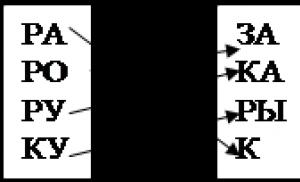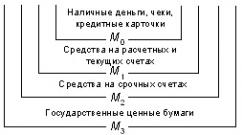Синклит registration form php. Создание простой системы регистрации пользователей на PHP и MySQL
In this lesson, we learn how to create user account registration form with PHP validation rules, upload profile avatar image and insert user data in MySQL database. We will then retrieve the information from the database and display it on the user profile welcome page. Here is what the welcome page is going to look like:
Setting up Form CSS and HTMLFirst, go ahead and copy the HTML source from below codepen and place the code in a file called form.php. Also create another file named form.css in the same directory and copy and paste all of the CSS code from the codepen below into it:
Once you"ve saved form.php and form.css, you may go ahead and run form.php to see what the form looks like. It should look exactly the same as the one showing in the "Result" tab from the codepen above.
Creating the Database and TableBefore we start adding PHP code to our form, let"s go ahead and create the database with a table which will store our registered users information in it. Below in the SQL script to create the database "accounts" and table "users":
CREATE DATABASE accounts; CREATE TABLE `accounts`.`users` (`id` INT NOT NULL AUTO_INCREMENT, `username` VARCHAR(100) NOT NULL, `email` VARCHAR(100) NOT NULL, `password` VARCHAR(100) NOT NULL, `avatar` VARCHAR(100) NOT NULL, PRIMARY KEY (`id`));
Below is a complete code with error checking for connecting to MySQL database and running above SQL statements to create the database and users table:
//connection variables $host = "localhost"; $user = "root"; $password = "mypass123"; //create mysql connection $mysqli = new mysqli($host,$user,$password); if ($mysqli->connect_errno) { printf("Connection failed: %s\n", $mysqli->connect_error); die(); } //create the database if (!$mysqli->query("CREATE DATABASE accounts2")) { printf("Errormessage: %s\n", $mysqli->error); } //create users table with all the fields $mysqli->query(" CREATE TABLE `accounts2`.`users` (`id` INT NOT NULL AUTO_INCREMENT, `username` VARCHAR(100) NOT NULL, `email` VARCHAR(100) NOT NULL, `password` VARCHAR(100) NOT NULL, `avatar` VARCHAR(100) NOT NULL, PRIMARY KEY (`id`));") or die($mysqli->error);
With our HTML, CSS and the database table in place, we"re now reading to start working on our form. The first step is to create a place for error messages to show up and then we"ll start writing some form validation.
Starting New Session for Error MessagesOpen up the form.php and add the following lines to it at the very top, make sure to use the php opening and closing tags (I have not included the html part of form.php to keep things clean).
We have created new session because we"re going to need to access $_SESSION["message"] on the "welcome.php" page after user successfully registers. MySQL connection has also been created right away, so we can work with the database later on.
We also need to print out $_SESSION["message"] on the current page. From the beginning the message is set to "" (empty string) which is what we want, so nothing will be printed at this point. Let"s go ahead and add the message inside the proper DIV tag:
Creating Validation RulesThis form already comes with some validation rules, the keyword "required" inside the HTML input tags, is checking to make sure the field is not empty, so we don"t have to worry about empty fields. Also, by setting input type to "email and "password", HTML5 validates the form for proper email and password formatting, so we don"t need to create any rules for those fields either.
However, we still need to write some validation rules, to make sure the passwords are matching, the avatar file is in fact an image and make sure the user has been added to our database.
Let"s create another file and call it validate.php to keep things well organized. We"ll also include this file from our form.php.
The first thing we"re going to do inside validate.php is to make sure the form is being submitted.
/* validate.php */ //the form has been submitted with post method if ($_SERVER["REQUEST_METHOD"] == "POST") { }
Then we"ll check if the password and confirm password are equal to each other
if ($_SERVER["REQUEST_METHOD"] == "POST") { //check if two passwords are equal to each other if ($_POST["password"] == $_POST["confirmpassword"]) { } }
Working with Super Global VariablesNote how we used super global variables $_SERVER and $_POST to get the information we needed. The keys names inside the $_POST variable is available because we used method="post" to submit our form.
The key names are all the named HTML input fields with attribute name (eg: name="password", name="confirmpassword"):
/>
To clarify a bit more, here is what the $_POST would look like (assuming all the fields in the form have been filled out) if we used a print_r($_POST) function on it, followed by die(); to terminate the script right after printing it. This is a good way of debugging your script and seeing what"s going on:
if ($_SERVER["REQUEST_METHOD"] == "POST") { print_r($_POST); die(); /*output: Array ( => clevertechie => [email protected] => mypass123 => mypass123 => Register) */
Now we"re going to get the rest of our submitted values from $_POST and get them properly formatted so they can be inserted to our MySQL database table
//the form has been submitted with post if ($_SERVER["REQUEST_METHOD"] == "POST") { if ($_POST["password"] == $_POST["confirmpassword"]) { //define other variables with submitted values from $_POST $username = $mysqli->real_escape_string($_POST["username"]); $email = $mysqli->real_escape_string($_POST["email"]); //md5 hash password for security $password = md5($_POST["password"]); //path were our avatar image will be stored $avatar_path = $mysqli->real_escape_string("images/".$_FILES["avatar"]["name"]); } }
In the above code, we used real_escape_string() method to make sure our username, email and avatar_path are formatted properly to be inserted as a valid SQL string into the database. We also used md5() hash function to create a hash string out of password for security.
How File Uploading WorksAlso, notice the new super global variable $_FILES, which holds the information about our image, which is the avatar being uploaded from the user"s computer. The $_FILES variable is available because we used enctype="multipart/form-data" in our form:
Here is the output if we use the print_r($_FILES) followed by die(); just like we did for the $_POST variable:
if ($_SERVER["REQUEST_METHOD"] == "POST") { print_r($_FILES); die(); /*output: Array ( => Array ( => guldan.png => image/png => C:\Windows\Temp\php18D8.tmp => 0 => 98823)) */ //this is how we"re able to access the image name: $_FILES["avatar"]["name"]; //guldan.png
When the file is first uploaded, using the post method, it will be stored in a temporary directory. That directory can be accessed with $_FILES[ "avatar "][ "tmp_name" ] which is "C:\Windows\Temp\php18D8.tmp" from the output above.
We can then copy that file from the temporary directory, to the directory that we want which is $avatar_path. But before we copy the file, we should check if the file is in fact image, for that we"ll check another key called from our $_FILES variable.
//path were our avatar image will be stored $avatar_path = $mysqli->real_escape_string("images/".$_FILES["avatar"]["name"]); //make sure the file type is image if (preg_match("!image!",$_FILES["avatar"]["type"])) { //copy image to images/ folder if (copy($_FILES["avatar"]["tmp_name"], $avatar_path)) { } }
The preg_match function matches the image from the [ "type" ] key of $_FILES array, we then use copy() function to copy our image file which takes in two parameters. The first one is the source file path which is our ["tmp_name"] directory and the second one is the destination path which is our "images/guldan.png" file path.
Saving User Data in a MySQL DatabaseWe can now set some session variables which we"ll need on the next page, which are username and avatar_path, and we"ll also create the SQL query which will insert all the submitted data into MySQL database:
if (copy($_FILES["avatar"]["tmp_name"], $avatar_path)) { //set session variables to display on welcome page $_SESSION["username"] = $username; $_SESSION["avatar"] = $avatar_path; //create SQL query string for inserting data into the database $sql = "INSERT INTO users (username, email, password, avatar) " . "VALUES ("$username", "$email", "$password", "$avatar_path")"; }
The final step is turn our query, using the query() method and check if it"s successful. If it is, that means the user data has been saved in the "users" table successfully! We then set the final session variable $_SESSION[ "message" ] and redirect the user to the welcome.php page using the header() function:
//check if mysql query is successful if ($mysqli->query($sql) === true) { $_SESSION[ "message" ] = "Registration succesful! Added $username to the database!"; //redirect the user to welcome.php header("location: welcome.php"); }
That"s pretty much all we need for the validation, we just need to add all the "else" keywords in case things don"t go as planned from all the if statements we have created. Here is what the full code for validate.php looks so far:
/* validate.php */ //the form has been submitted with post if ($_SERVER["REQUEST_METHOD"] == "POST") { //two passwords are equal to each other if ($_POST["password"] == $_POST["confirmpassword"]) { //define other variables with submitted values from $_POST $username = $mysqli->real_escape_string($_POST["username"]); $email = $mysqli->real_escape_string($_POST["email"]); //md5 hash password for security $password = md5($_POST["password"]); //path were our avatar image will be stored $avatar_path = $mysqli->real_escape_string("images/".$_FILES["avatar"]["name"]); //make sure the file type is image if (preg_match("!image!",$_FILES["avatar"]["type"])) { //copy image to images/ folder if (copy($_FILES["avatar"]["tmp_name"], $avatar_path)){ //set session variables to display on welcome page $_SESSION["username"] = $username; $_SESSION["avatar"] = $avatar_path; //insert user data into database $sql = "INSERT INTO users (username, email, password, avatar) " . "VALUES ("$username", "$email", "$password", "$avatar_path")"; //check if mysql query is successful if ($mysqli->query($sql) === true){ $_SESSION["message"] = "Registration successful!" . "Added $username to the database!"; //redirect the user to welcome.php header("location: welcome.php"); } } } } }
Setting Session Error Messages When Things Go WrongLet"s go ahead and add all the else statements at once where we simply set the $_SESSION[ "message" ] error messages which will be printed out when any of our if statements fail. Add the following code right after the last if statement where we checked for successful mysqli query and within the last curly bracket like this:
If ($mysqli->query($sql) === true){ $_SESSION["message"] = "Registration succesful!" . "Added $username to the database!"; header("location: welcome.php"); } else { $_SESSION["message"] = "User could not be added to the database!"; } $mysqli->close(); } else { $_SESSION["message"] = "File upload failed!"; } } else { $_SESSION["message"] = "Please only upload GIF, JPG or PNG images!"; } } else { $_SESSION["message"] = "Two passwords do not match!"; } } //if ($_SERVER["REQUEST_METHOD"] == "POST")
The session message will then display the error message in the div tag where we put our $_SESSION["message"] if you recall:
Below is an example of what the error message is going to look like when two passwords don"t match. Feel free to play around with it to trigger other error messages:
 Creating User Profile Welcome Page
Creating User Profile Welcome Page
We"re now done with the validate.php. The final step is to create welcome.php page which will display the username, avatar image and some users that have already been registered previously along with their own user names and mini avatar thumbnails. Here is what the complete welcome.php should look like, I will explain parts of it that may be confusing:













